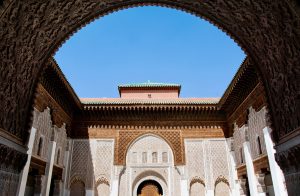Saint Ambrose was a 4th-century bishop of Milan, born in 339 and died on April 4, 397. He was both a theologian and a statesman who promoted Christianity in Rome at a crucial time. Saint Ambrose left a substantial collection of writings, so we know a lot about him. Among the works of Saint Ambrose are ethical commentary De officiis ministrorum (377–391) and the exegetical Exameron (386–390). In addition to the preaching of Saint Ambrose produced a musical hymnography was produced. Saint Ambrose was one of the most influential ecclesiastical figures of the 4th century. He has been a doctor of the church since 1298. Do you think Saint Ambrose was among the most influential saints ever?
Saint Ambrose Biography

Saint Ambrose was born into a Roman Catholic family of Greek descent in 339. Ambrose began life in Augusta Treverorum (modern Trier), the capital of the Roman province of Gallia Belgica in what was then northeastern Gaul and is now in the Rhineland-Palatinate in Germany. A legend about him is that as an infant, a swarm of bees settled on his face while he lay in his cradle, leaving behind a drop of honey. Interestingly, bees and beehives often appear in the saint’s symbology.
When Saint Ambrose was young, his father died. Later, his mother left Trier with her three children, and the family moved to Rome. There he studied literature, law, and rhetoric, and then followed in his father’s footsteps and entered public service. In 374, the bishop of Milan. He had some troubles at first as Arians challenged his succession.
As a bishop, he immediately adopted an ascetic lifestyle (so he was like a hermit), gave his money to the poor, and donated all of his land. While Bishop of Milan, Ambrose carefully cultivated practices that respected local customs and that reflected his spiritual beliefs. He understood the link between a religious leader’s life and their ability to model morality for congregants. In his work De Officiis (377–391), he asked, “How can you consider a man to be better than you when it comes to advising if you see that he is worse than you when it comes to morality?”
Saint Ambrose had many controversies with Arianism while he was a Bishop. Also, during that time, we know he both questioned and advised Roman Emperors. The Emperors during his bisopic were Roman emperors Gratian, Valentinian II, and Theodosius I. Soon after acquiring the undisputed possession of the Roman Empire, Theodosius died at Milan in 395, and Saint Ambrose eulogized him. Ambrose died on April 4, 397. He was succeeded as bishop of Milan by Simplician. Saint Ambrose’s body may still be viewed in the church of Saint Ambrogio in Milan, where it has been continuously venerated.
He had no fewer than 39 writings during his lifetime that survive today. The history of the editions of St. Ambrose’s works spans several centuries, and we are lucky his work survived. Erasmus published them in four volumes in Basel in 1527. A significant Roman edition, the result of many years of labor, appeared in 1580 in five volumes, initiated by Sixtus V when he was still the monk Felice Peretti. There are other published volumes as well.
Conclusion
Ambrose’s reputation after his death was unchallenged. For Augustine, he was the model bishop. Yet, he is a Janus-like figure. Asmbrose imposed his will on emperors, but he never considered himself a precursor of a polity in which the church dominated the state, for he acted from a traditional fear that Christianity might yet be eclipsed by a pagan nobility and Catholicism uprooted in Milan by Arian courtiers. There is a tremendous amount of writing for this saint that survives so we can study him.